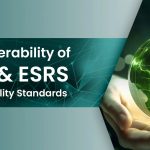Financial authorities have a critical role to play in building a sustainable financial system that benefits investors, the environment, and society as a whole, according to a new report from the Principles for Responsible Investment (PRI).
The organization recently published the first part of its Sustainable Finance Policy Toolkit, a guide that analyzes how policymakers can help investors address sustainability-related risks.
“Financial authorities can play an important role in building a stable, sustainable financial system that rewards long-term responsible investment, to the benefit of investors’ clients and beneficiaries and the environment and society as a whole,” the report states.
The PRI revised its 2020 report to reflect recent developments in sustainable and responsible investment policy. This new version draws on insights from the organization’s own regulatory database, academic literature, and interviews with stakeholders like investors, academics, and policymakers.
The investor’s conundrum:
The report, titled “How financial authorities can build a sustainable financial system, Part 1: Addressing investor challenges,” highlights six key obstacles that investors face when trying to implement responsible investment practices. These include a lack of incentives to address the root causes of sustainability risks and incomplete capital markets, which can lead to a shortage of investable projects.
Another major challenge is policy inconsistency and uncertainty, which can deter long-term capital allocation for a just economic transition. The report also points to a lack of transparency and credibility due to inadequate data and verification mechanisms. Other hurdles include principal and agent challenges, where the goals of asset owners, investment managers, and corporate managers can be misaligned, and a lack of awareness, capacity, and expertise among investors regarding sustainability issues.
The path forward for regulators:
The guide argues that sustainability factors are directly relevant to the three main objectives of financial regulators: financial stability, market integrity and efficiency, and investor protection. To effectively fulfil these mandates, the report identifies three levels of ambition for financial authorities:
Level 1: Managing exposure to sustainability-related risks. At this level, authorities focus on enhancing resilience by ensuring investors can identify, monitor, and address the impacts of sustainability risks on their investments and the broader financial system.
Level 2: Addressing the drivers of sustainability-related risks. This level encourages financial authorities to guide investors in considering how their investments impact investee entities and, by extension, the social and planetary conditions that can drive systemic risks.
Level 3: Supporting governments in driving the economy-wide transition. This highest level of ambition involves financial authorities collaborating with policymakers to align the financial sector with broader government goals for economic transition.
The report concludes that by pursuing all three levels of ambition, financial authorities can create a stable, sustainable financial system that benefits everyone. A companion report, Part II, will provide a detailed look at 10 specific policy tools that authorities can use to address the challenges outlined in this first installment.












